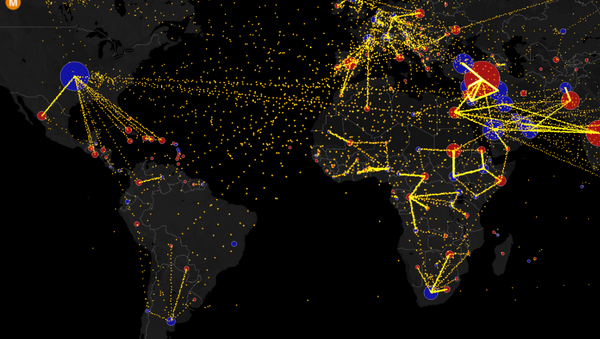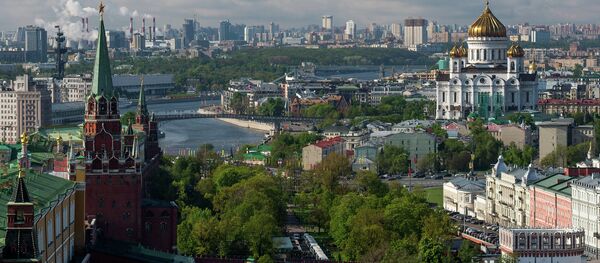This chaotic picture with its swirling dots and multicolored circles might look intimidating at first, but we will walk you through it. The map, based on data from the UN Population Division, shows migration flows between sending and receiving countries.
Each nation has been assigned a circle. Blue circles denote countries with positive net migration. In other words, more people move into a country than move out of it. Red circles stand for negative net migration.
If you click on a circle, the map will only show inflows and outflows for this particular country. Hovering over a circle brings up a window with total net migration between 2010 and 2015.

Take Russia, for instance. Depicted by a blue circle, it has more immigrants than emigrants. Estimates show that more than 307,000 people moved to Russia in the five-year time frame, with post-Soviet countries, most notably Ukraine serving as the main donors. The majority of immigrants headed to Kazakhstan (more than 80,000) and Germany (nearly 70,000).
Brexit is a fine case in point. Immigration featured prominently as one of key topics in the months leading to the UK's EU referendum. The Leave campaign promised that Britain will have more control over immigration outside of the European Union at a time when continental Europe has been struggling to tackle the massive influx of refugees.
"What strikes me as interesting is how small a portion of the UK's net immigration is actually coming from Europe," Galka noted.
Iraq and Syria also present interesting case. Both countries have been ravaged by sectarian violence and both are partially controlled by Daesh. But while Syria saw more than 4.685 million people fleeing the country between 2010 and 2015, Iraq welcomed approximately 1.320 million immigrants.
Syria grabbed Galka's attention too.
"Many Middle Eastern countries have been criticized for allegedly accepting few Syrian refugees. In Qatar and the UAE, the net migration appears to actually be negative. Though of the Middle Eastern countries that are accepting Syrian refugees, the numbers they are dealing with are orders of magnitude higher than in the West," he commented.



